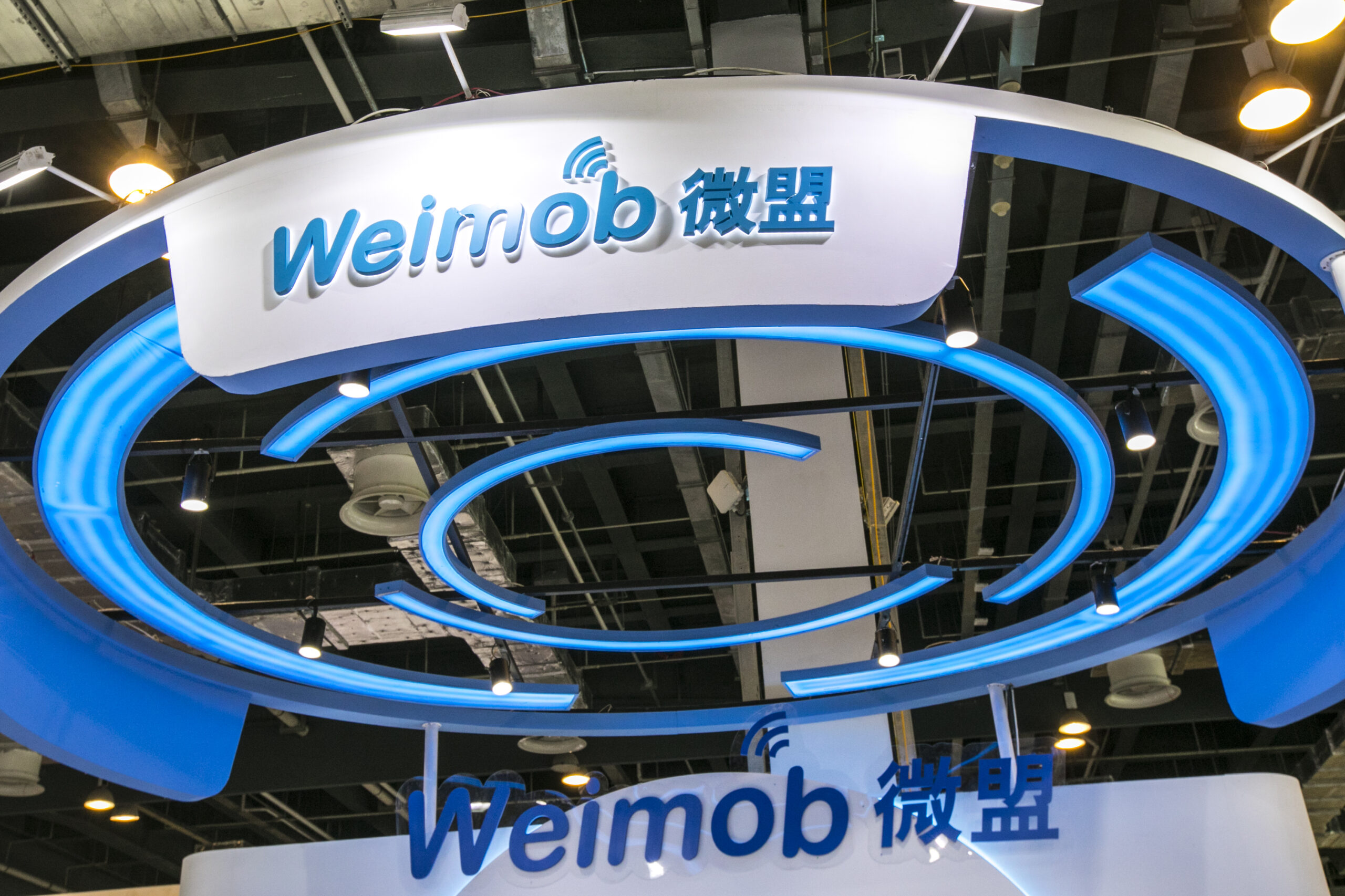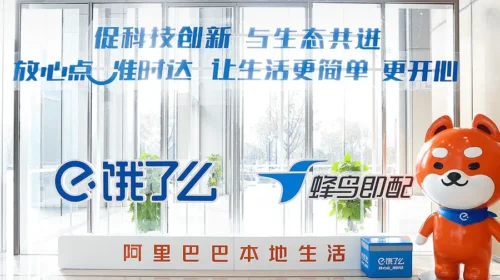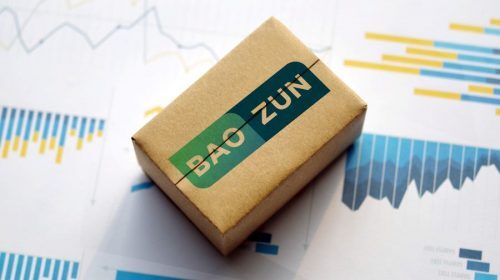Weimob returns to growth as long march towards elusive profits continues

The e-commerce services provider reported strong growth for its ad billings and software orders in the first quarter, as analysts expect its revenue to rise about 30% this year
Key Takeaways:
- Weimob emphasized cost savings while also reporting positive operational data for the first quarter, including a 58% increase in gross advertisement billings
- The e-commerce services provider closely tied to WeChat said it aims to break even in the second half of this year and become profitable in 2024
By Trevor Mo
China’s recovery is picking up as the country returns to business as usual in the post-Covid era. Even so, the old practice of pursuing growth at any cost is no longer viable, and efficient operations are essential for long-term profitability.
That’s the latest message coming from Weimob Inc. (2013.HK), whose software tools are used by small- and mid-sized e-commerce merchants to reach customers primarily on Tencent’s (0700.HK) popular WeChat app. In a business update released last Thursday, the company stressed the need to control costs, pointing out that a 30% drop in its employee remuneration costs helped it sharply lower its operating loss in the first quarter of this year.
The report also included some relatively strong operational data for the quarter as China’s economy shows early signs of recovery after Beijing lifted most of its tough Covid controls late last year. Its first-quarter gross billings from advertisements grew by 58% to 3.13 billion yuan ($450 million) year-on-year, while its software-as-a-service (SaaS) orders increased by 20%.
Founder and CEO Sun Taoyong previously focused on cost-cutting during an investor call to discuss the company’s annual results released in late March, saying Weimob would seek to balance “revenue growth and breakeven.” He added that this year’s core strategy is to achieve “high-quality growth.”
The company’s shift from its previous strategy of pursuing revenue growth above all else, regardless of costs, began at the start of last year. Cost-cutting became a major theme for Weimob through 2022, as it embarked on a campaign that included phasing out some of its unprofitable business lines, and conducting layoffs.
Such cost cutting became a major theme among most U.S.- and Hong Kong-listed Chinese companies last year, as they grappled with business slowdowns during widespread disruptions created by China’s strict Covid controls. At the same time, foreign investors have signaled they will no longer support high-growth, money-losing Chinese companies simply for their big revenues, as they increasingly demand such companies operate profitably.
Weimob earned a small profit in 2019, the year it made its IPO in Hong Kong. But it has lost money in each of the last three years, and analysts expect the losses to continue this year.
The company’s annual results for 2022 showed its selling and distribution costs fell by 1.1% last year, while its general and administrative expenses rose by 23.6%. Both figures represented sharp improvements from increases of more than 80% for both categories the previous year.
Weimob’s shift to cost controls last year was most likely a direct response to the pandemic that was wreaking havoc on China’s economy at the time, leading many of the e-commerce merchants who are its main customers to rein in their IT and software spending.
Despite its cost-cutting efforts, the pandemic took a heavy toll on the company. Its net loss last year more than doubled to 1.8 billion yuan, up from 783 million yuan for 2021. The yawning losses came as Weimob’s revenue dropped by 6.5% to 1.8 billion yuan last year, representing its first annual revenue decline since 2015.
Investor concern
As its top-line revenue growth was stalling, the company realized that a lack of profitability has become a major investor concern. Weimob’s stock briefly soared from its IPO price of HK$2.70 to as high as HK$30 in early 2021 as investors bought into its growth story when Chinese internet stocks were still hot property. But it’s been all downhill from there, even though its latest close of HK$4.25 is still double the IPO price.
Following the big declines for its stock, Weimob trades at a price-to-sales (P/S) ratio of 3.65 based on its revenue for last year. By comparison, U.S. peer Salesforce (CRM.US) trades nearly twice as high with a P/S of 6.31. But domestic rival Baozun (BZUN.US), which is closely tied to e-commerce giant Alibaba (BABA.US; 9988.HK) and made headlines last year with its purchase of clothing retailer Gap’s (GPS.US) China operations, trades at a lowly P/S of just 0.26.
Weimob’s management has said it expects the company’s loss to significantly narrow this year. A report from Jefferies predicts the company’s full-year adjusted loss, which excludes non-cash items like stock-based employee incentives, will improve from 981 million yuan in 2022 to a 317 million yuan this year. The company also expects to achieve breakeven in the second half of this year, and become fully profitable in 2024, Jefferies said.
To achieve that, Weimob is pursuing an ongoing strategy of “high-quality growth,” which centers on channeling more resources to target larger key customers that tend to have bigger budgets for IT spending. In particular, the company is targeting retail brands, a group which contributed 40% of its core subscription solution revenue in 2022. The company expects that proportion will increase to nearly 50% in 2023 and nearly 70% in 2025.
The company also wants to increase its advertising revenue by deepening its partnership with Tencent. One major growth area could lie in the rapid development of Tencent’s short video service, which has gained traction lately as WeChat users flocked to the service for entertainment and other purposes. As the short video service becomes a new growth driver for Tencent’s advertising business, Weimob hopes to benefit through its status as a major advertising agency for the social media giant.
Ads via its Tencent connections contributed 80% of Weimob’s advertisement gross billings last year. The short video service has become the major driver of that, contributing 7 million yuan in daily advertisement gross billings to Weimob, according to an April report by Daiwa Capital Markets.
At the end of the day, whether Weimob will realize its goal of achieving profitability will depend on how much it can control costs, and its ability to jumpstart growth through some of the various new initiatives we’ve described.
Still, it appears the company’s 2024 profitability goal is based on adjusted metrics. It isn’t clear when the company might be able to achieve a profit on a IFRS basis.
The company is expected to report a net loss of 529 million yuan this year, according to the average of 14 analysts polled by financial information provider Wind. Daiwa Capital Markets believes that Weimob won’t be able to break even on a full-year basis until 2024.
While the profitability question remains a matter of who you ask, observers are more unified on their belief that Weimob will return to revenue growth this year. Fourteen analysts polled by Yahoo Finance expect, on average, the company will report revenue growth of about 30% this year.
To subscribe to Bamboo Works free weekly newsletter, click here






